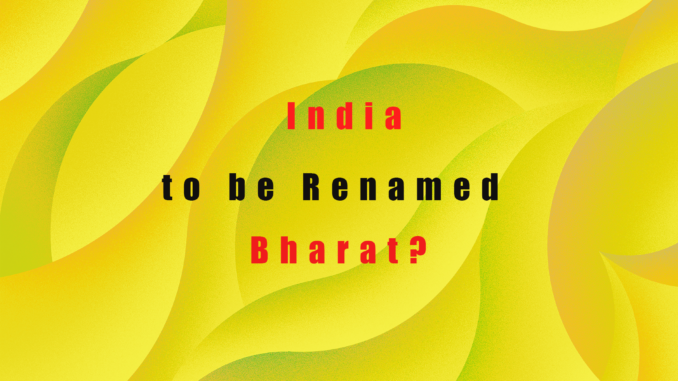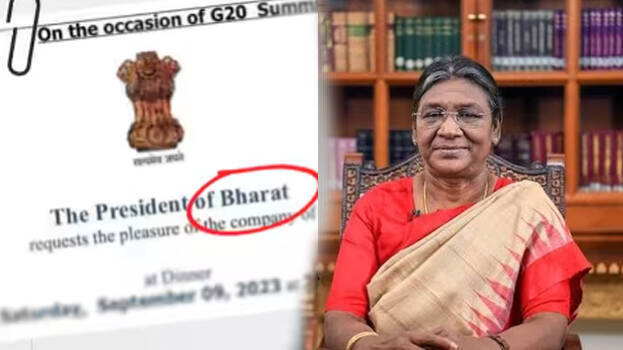
India is likely to be renamed Bharat. This comes as the official invite to the G20 Heads of State and ministers for a dinner being hosted by President Droupadi Murmu has gone with the heading President of Bharat.
The resolution is likely to be taken up in the Special Session of Parliament. The move is being seen to avoid confusion with the Opposition alliance INDIA.
Earlier invitations had the heading President of the Republic of India.

History of Different Names of India
Ancient Roots: Bharatvarsha
The name “Bharat” finds its origin in ancient Hindu mythology and literature. According to Indian epics like the Mahabharata and the Ramayana, Bharatvarsha was believed to be a sacred land, named after the legendary king Bharata who ruled the region in ancient times. This designation represented a geographic and cultural realm encompassing the Indian subcontinent. The term Bharatvarsha was also employed in subsequent centuries and served as a unifying symbol of ancient India.
Persian Influences: Hindustan
During the medieval period, the region came under the influence of Persian-speaking Muslim rulers. It was during this period that the term Hindustan emerged, derived from the Persian word “Hindu,” meaning the land of the Hindus. Hindustan refers to the vast Indian subcontinent extending from the Indus River to the eastern Gangetic plains. Over time, Hindustan evolved to encompass the distinct cultural, linguistic, and religious diversity that characterized the region.
Colonial Past: British India
The arrival of European powers, particularly the British, ushered in a new era in Indian history. The British East India Company established its foothold in India during the 17th century, eventually leading to British colonial rule. During this period, the name “India” gained prominence as British India became a vital administrative unit of the British Empire. The term “Indian” was used to refer to the subjects of the British Raj, irrespective of their diverse cultural backgrounds and regional affiliations.
Post-Independence: Republic of India
Following a long and arduous struggle for independence, India attained freedom from British rule in 1947. With the adoption of a new constitution in 1950, the newly formed country became the Republic of India. This name reflects the idea of a democratic, sovereign nation committed to secular values while embracing its diverse cultural heritage.
Jambudvipa
The ancient texts also mentioned India as “Jambudvipa,” which translates to “Land of the Jambu (Rose Apple) trees.” This name represents the lush and diverse flora that characterizes the Indian landscape.
Conclusion
India’s journey through history, encompassing various names such as Bharat, Hindustan, and India itself, offers a fascinating glimpse into its multi-layered identity. Each name carries its own significance, representing different eras, cultural influences, and societal transformations. The proposed transition back to the name Bharat raises thought-provoking questions about national identity, cultural preservation, and the ongoing process of defining a nation’s essence. Regardless of the outcome, the discussions surrounding India’s renaming underscore its rich historical tapestry, reinforcing the significance of understanding its complex past as we move forward into the future.
Leave a Reply